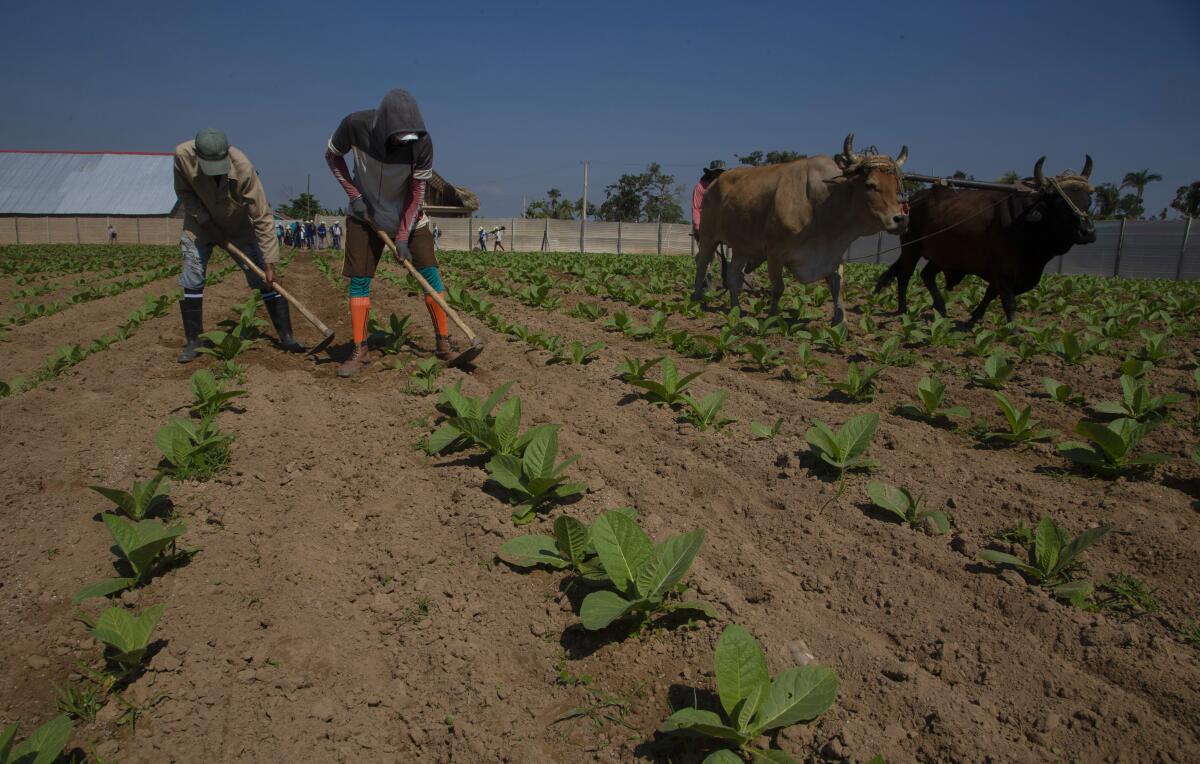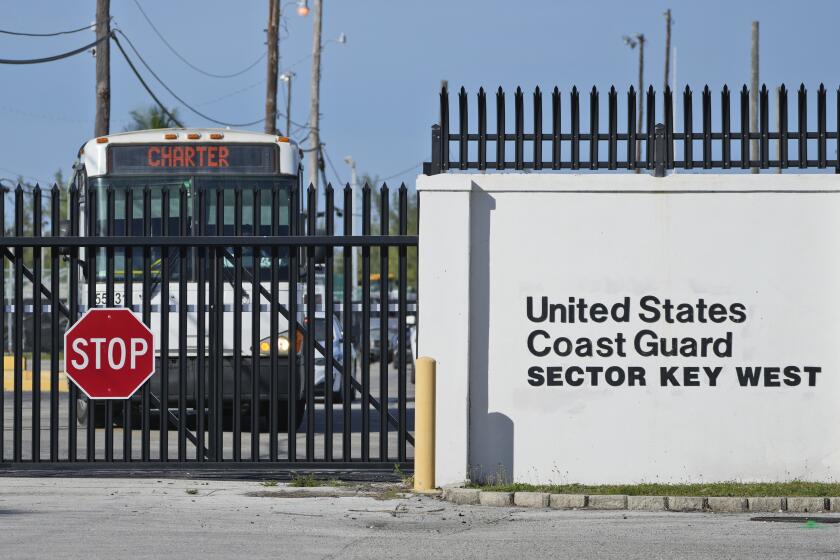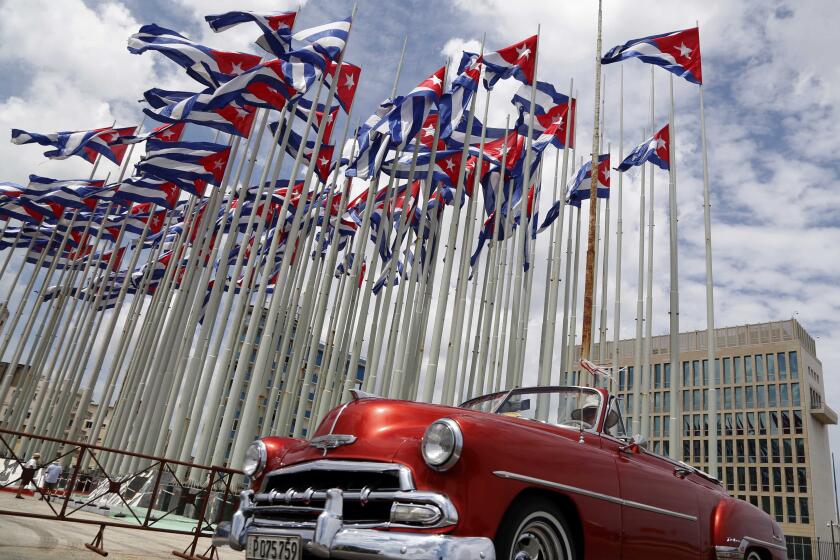Cuba tobacco is rebounding after ruinous Hurricane Ian

SAN LUIS, Cuba â A neighbor lent him a house to dry leaves, and he had a little fertilizer saved, so he plucked up the courage to plant tobacco. Now, Hirochi Robaina can hardly believe the resulting miracle.
Robaina, one of the most recognized tobacco producers in Cuba, marvels as he walks through the intense green of plants that have grown over 3 feet high in the Pinar del Rio region.
Six months after Hurricane Ian devastated 80% of the regionâs tobacco infrastructure, farmers are working to recuperate from the disaster. And though theyâll produce less than in previous seasons, they say theyâll be able to harvest leaves for premium hand-rolled cigars, one of the Caribbean nationâs key exports.
âNot a single tobacco house was left standing. There were no warehouses; there was no tree left,â Robaina told the Associated Press, recalling how the storm left the region at the end of September. âEverything broke, and at that moment I did not believe it was possible to plant.â
Increasing numbers of Cuban and Haitian migrants have tried the risky Florida Straits crossing recently as economic conditions fall in their countries.
Robaina, 46, is heir to the famed estate of his grandfather, namesake of the cigar brand Vegas Robaina.
At the beginning of October, Hirochi Robaina had resigned himself to planting only beans and vegetables â something, at least, but wasted potential for land that could produce some of the finest export tobacco.
But he changed his mind, and decided to try planting tobacco âto maintain the family tradition of a century,â he said, showing his roughly 5 acres of tobacco â about 30% of what he had at this time last year.
Ianâs impact added to an already intense economic crisis in Cuba, where the gross domestic product dropped 11% in 2020.
The kind of destruction brought by the hurricane is the worst in memory for many farmers. In the fall, they doubted they would be able to plant any tobacco this season. The crop requires special care, application of fertilizers at precise moments, irrigation, cloth to cover the plants and drying houses for the leaves.
With winds of more than 125 mph, Ian crossed the island from south to north and then to the west, devastating the Pinar del Rio region, which produces 80% of the islandâs tobacco, including almost all of its tobacco for export.
The resumption of visa and consular services comes years after a spate of unexplained health incidents among U.S. diplomatic staff in Havana in 2017.
Five people in Cuba were killed and 30,000 were evacuated. Thousands of utility poles fell. Entire communities were without electricity, water and telephones for weeks. Rice, corn, sweet potato and fruit crops were destroyed.
Some 10,000 tobacco drying houses were toppled. About 33,000 tons of stored leaves were lost, according to authorities.
Private tobacco producers have been meeting with authorities since last fall to secure government commitments to help settle debts and pay for materials to rebuild tobacco drying houses. Help also has come from fellow tobacco producing nations Nicaragua and the Dominican Republic, and producers have also chipped in to help one another.
Reiniel Rojas, a 33-year-old farmer who has been cultivating premium tobacco for 10 years, said that for him, âthe recovery was quick.â
The resumption of visa and consular services comes years after a spate of unexplained health incidents among U.S. diplomatic staff in Havana in 2017.
He was able to finish work on his drying houses and plant about 30 acres around the Pinar del Rio village of La Coloma with seeds he got from a colleague.
In addition to the drying house that Robainaâs neighboring cousin lent him, he received four chainsaws from producer friends from other countries. In turn, he lent some fertile land to two other farmers.
Nature also helped by withholding plagues of caterpillars or fungi, which reduced the need for pesticides.
A tobacco house costs a producer around $20,000 at the official exchange rate. A good harvest, with the delicate work of a whole year, can pay a farming family up to $50,000, farmers told the AP.
The figure is not small for Cuba, where a state salary in the city is about $200 a month in the limited official economy, but would amount to only about $29 in practical terms for most Cubans in the broader, informal economy.
Enrique Blanco, agricultural director of Tabacuba, part of the government-owned Cubatabaco company that regulates and manages much of the islandâs tobacco, told the AP that this yearâs plan for tobacco planting is about 23,000 acres â down from the 37,000 acres that were initially planned.
That should yield about 5,200 acres of premium leaves, which Blanco said the country hopes will cover the coming demand for exports.
More to Read
Sign up for Essential California
The most important California stories and recommendations in your inbox every morning.
You may occasionally receive promotional content from the Los Angeles Times.












